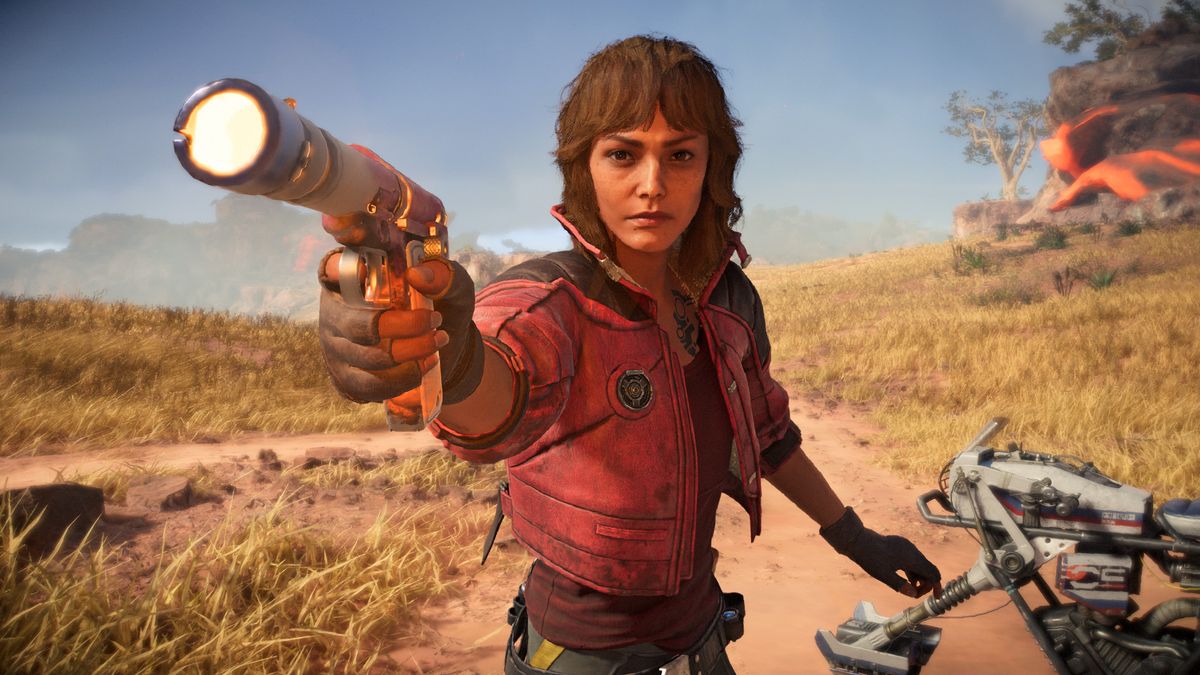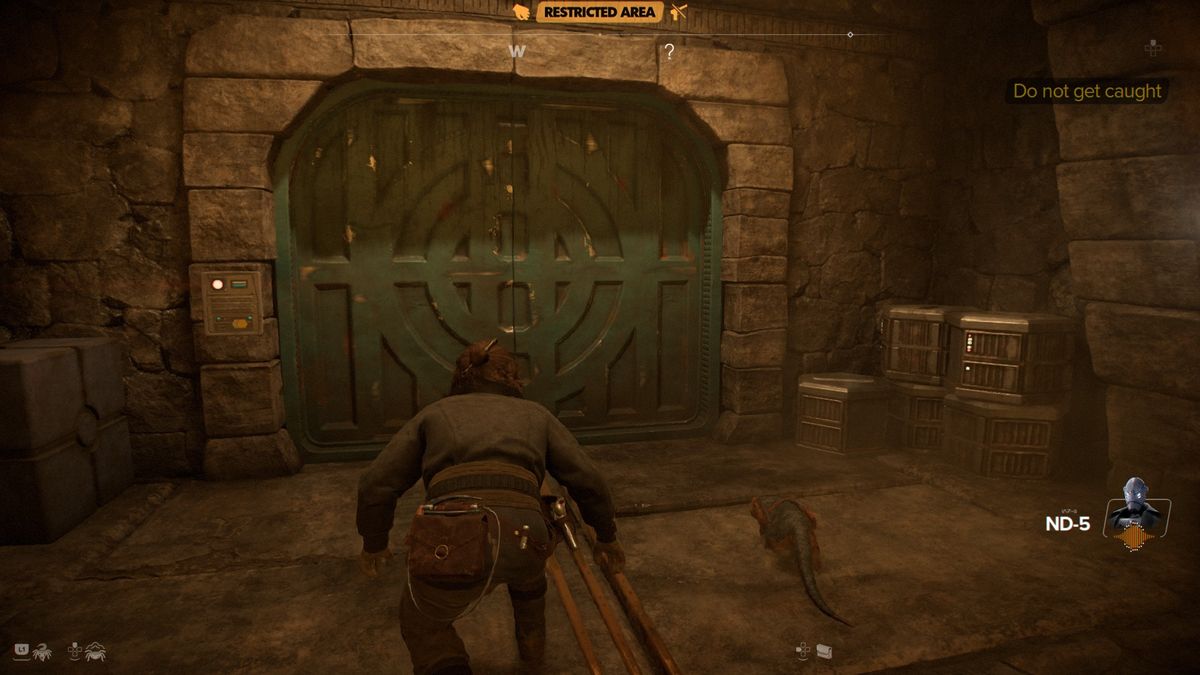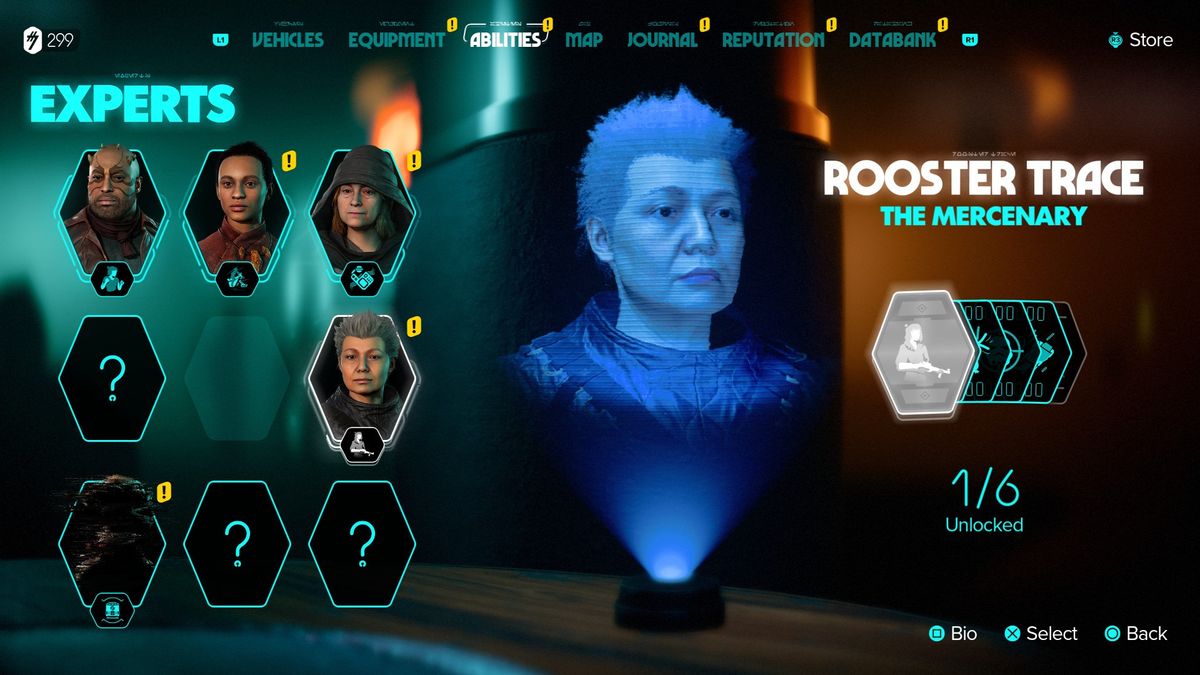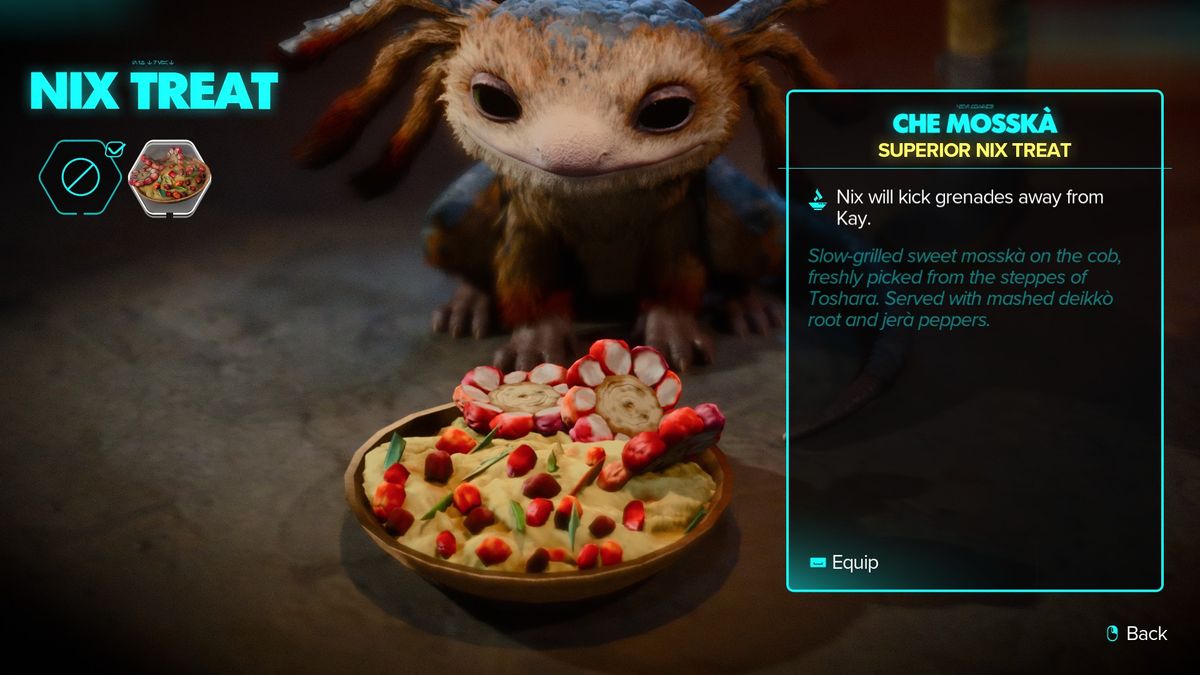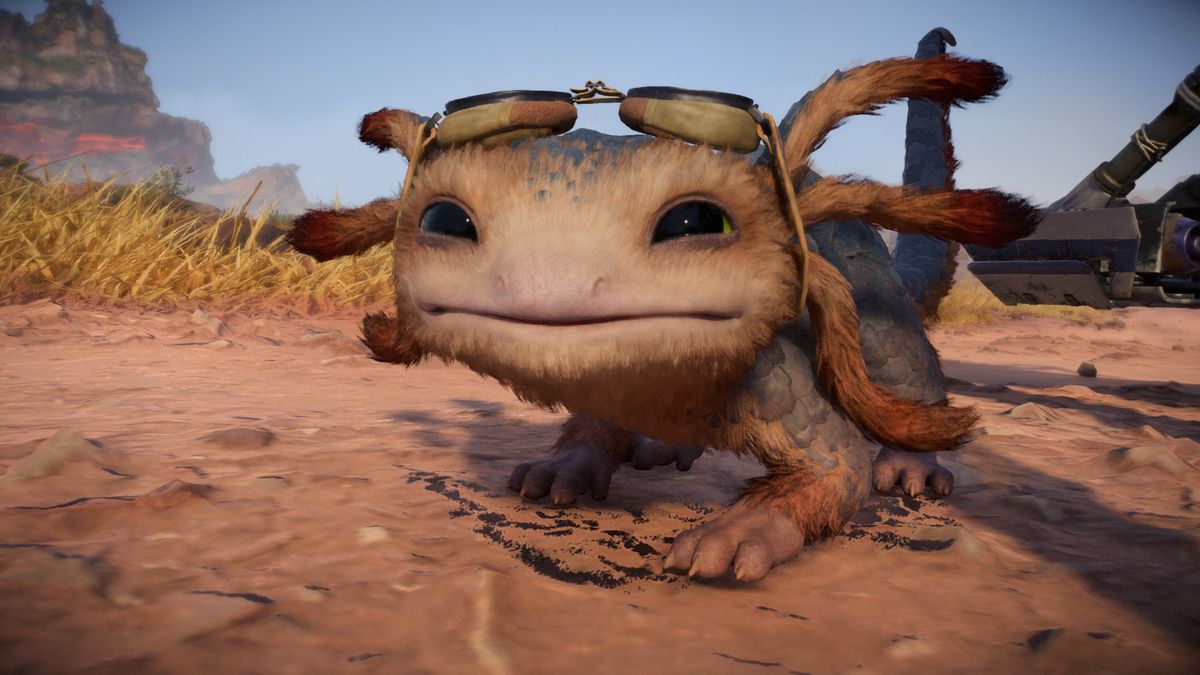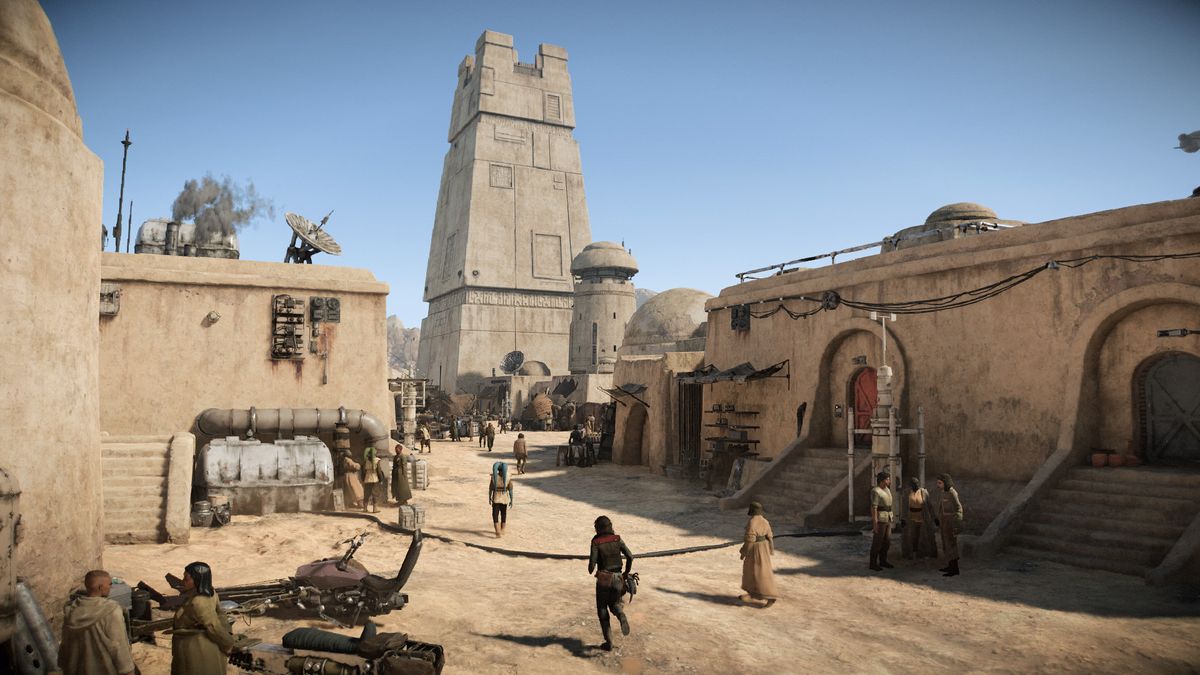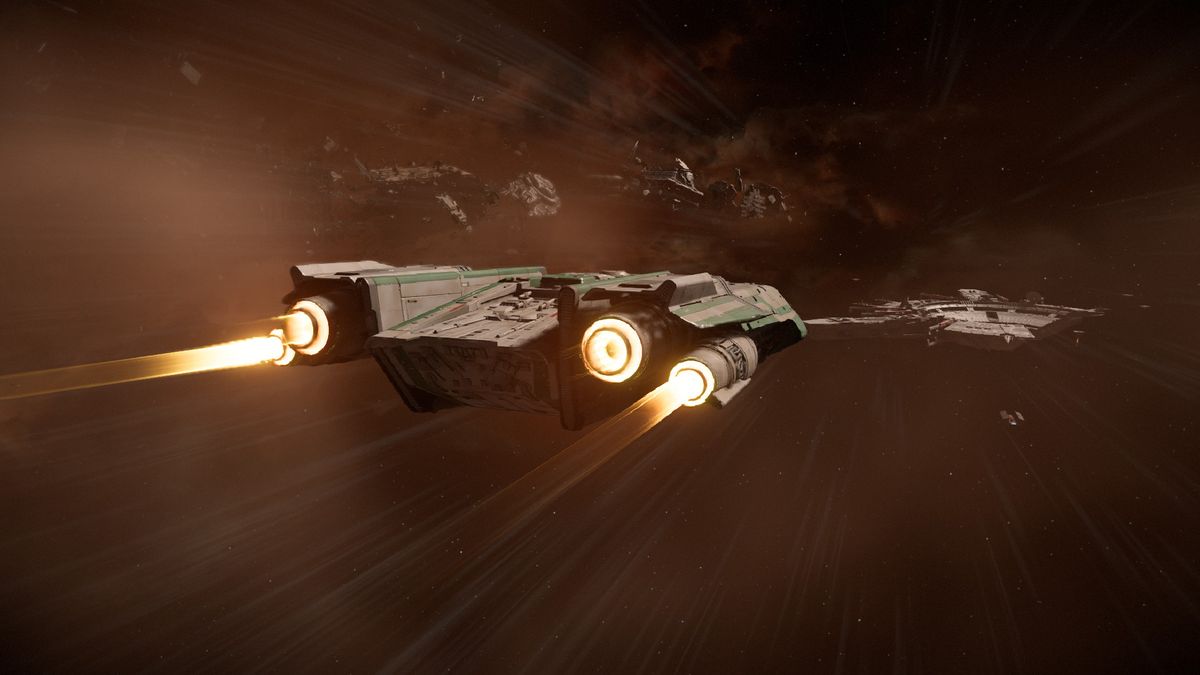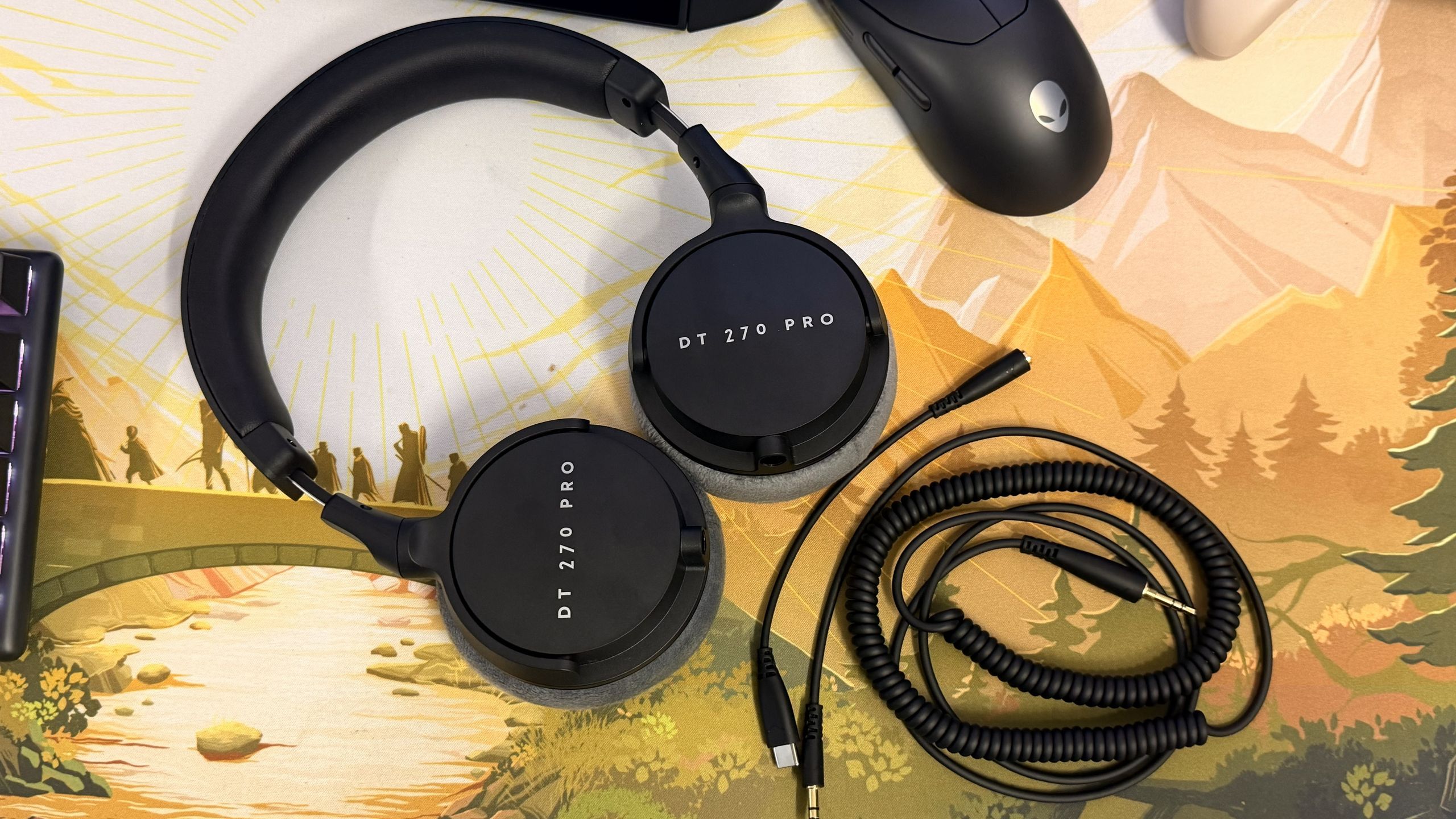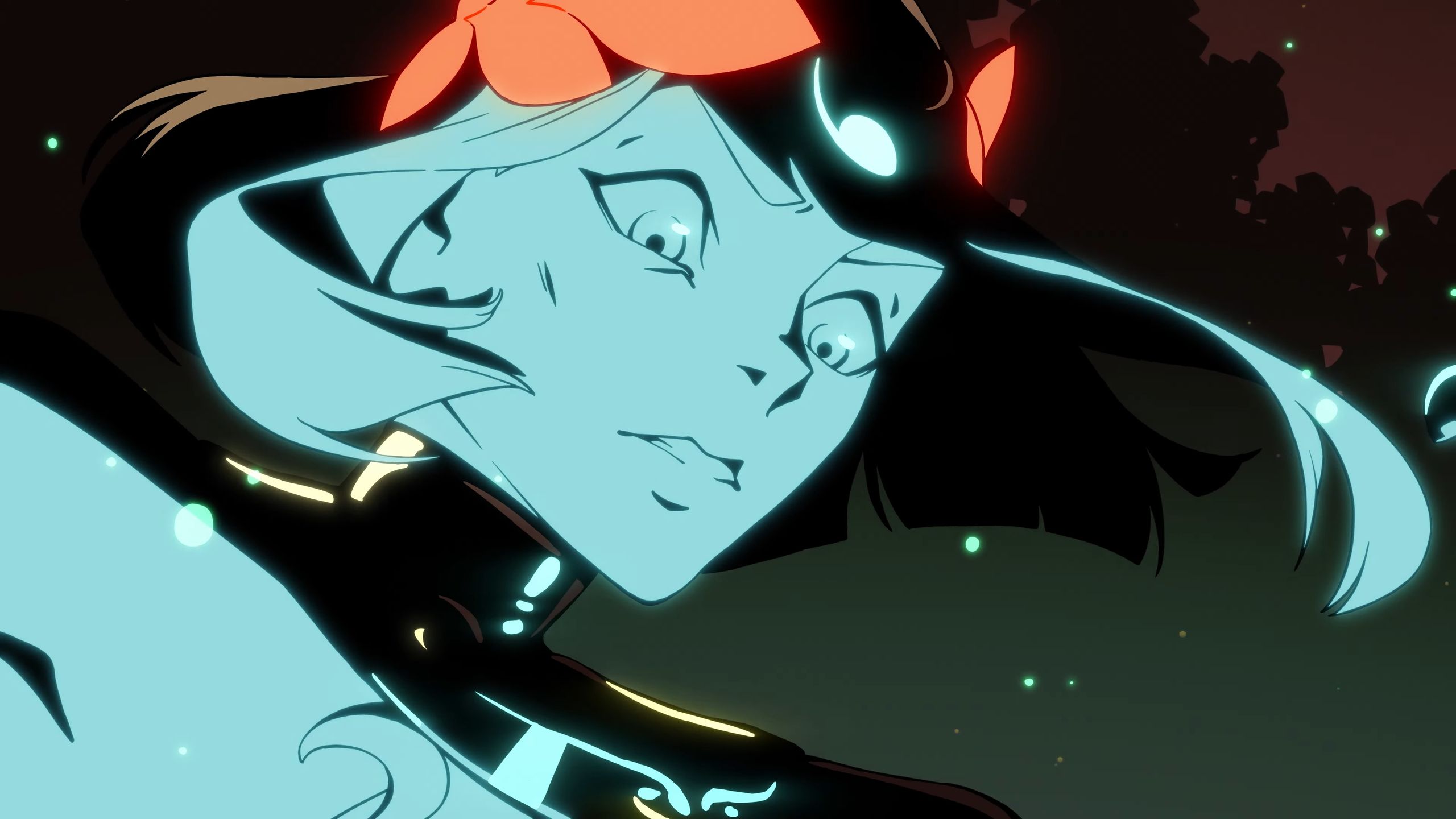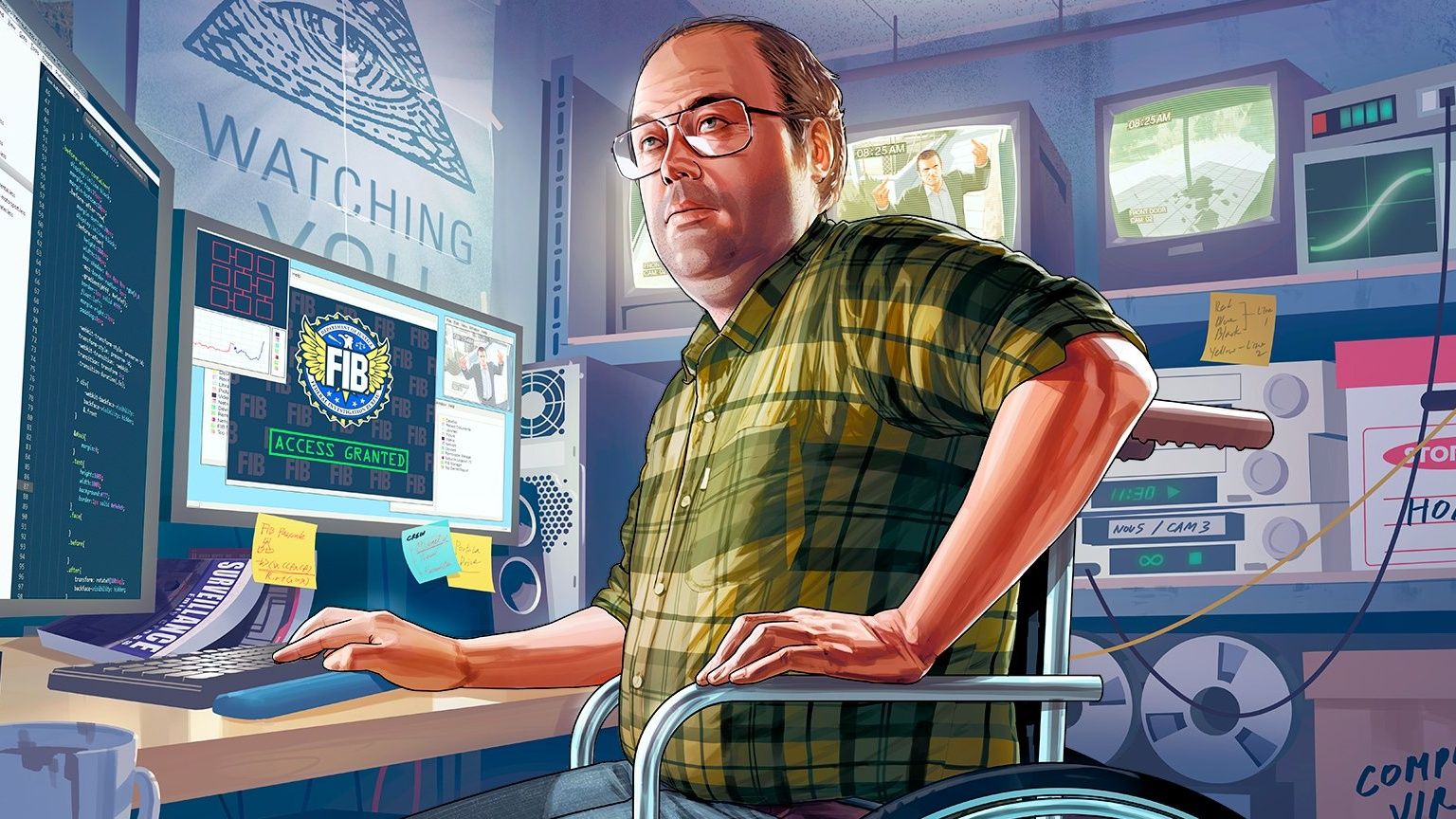Ubisoft has the reputation of a trend-chasing collection of studios that make the same types of open world games over and over, but not enough people talk about the cool, unexpected, or just plain weird little touches its games have that no other massive publisher would ever greenlight.
NEED TO KNOW
What is it? An open world Star Wars game from Ubisoft where blasters rule and lightsabers drool.
Release date August 30, 2024
Expect to pay $70/£60
Developer Ubisoft Massive
Publisher Ubisoft
Reviewed on RTX 2080 Super, Intel Core i9 9900KS, 32GB RAM
Multiplayer No
Steam Deck N/A
Link Ubisoft Connect
I’m talking about the good stuff, like Assassin’s Creed Mirage’s robust codex of ancient Baghdad museum pieces, Rainbow Six Siege’s overkill destruction engine, Avatar: Frontiers of Pandora’s ambitious exploration mode that turns every waypoint into contextual directions so you develop a real sense of mastery over the planet’s geography. I’m talking about designing an entire Watch Dogs sequel around the concept of plucking any citizen off the street—randos with simulated interests, relationships, and schedules down to the hour—and turning them into the protagonist.
Star Wars Outlaws is both sides of Ubisoft: it’s conventional and safe in ways that really get on my nerves, but it’s also ambitious enough to be more than just a third-person shooter in a sandbox. Outlaws is a game where nearly every story mission involves crawling through a vent that leads to a ladder that leads to a hallway. It’s also a game with a reactive reputation system that matters, ludicrously detailed cities I didn’t want to leave, and maybe my favorite open world side activity ever.
Street urchin
One of those good ideas is Kay Vess, Outlaws’ wide-eyed protagonist with a background that reads like every D&D party’s rogue: She grew up on the streets of Canto Bight (the casino planet from The Last Jedi), running jobs and taking scores from a young age. Kay is smart and arrogant in a Solo sort of way, but she’s also less impulsive and slower to solve every problem with a blaster. She’s instantly likable, and scores extra points with me for having nothing to do with lightsabers or the force. There’s a distinct lack of self-importance to Outlaws that I appreciate. This game doesn’t cover any important backstory or even attempt to juice up Kay’s importance in the canon—she’s an unimportant speck in a galactic war she couldn’t be less interested in (Outlaws takes place between Empire Strikes Back and Return of the Jedi).
Outlaws’ best moments tend to happen between quests when I’m walking through a city looking to make some Credits or spend everything I just earned. I love how easy it is to fall into the scoundrel roleplay in Outlaws—picking up odd jobs, shopping for obscure blaster parts, playing arcade machines in a cantina, betting on races, cashing out in Sabacc.
Man, I can’t stop thinking about Sabacc, easily Outlaws’ strongest minigame. It’s basically simplified poker where every player tries to make the smallest possible pair, but with variables that add surprising depth. Special cards, like one that copies whatever card is next to it, can save Kay from a bad draw at the last second. Players can also play special medals that trigger instant effects, like forcing all players to throw another chip in the pot or preventing them from drawing more cards. You actually have to collect these medals in the world by tracking them down at vendors or stealing them from vaults. Kay can even employ her pet Nix to glance at other players’ cards through a timing minigame.
A lot of effort for a minigame, right? That’s something I picked up early about Outlaws: it takes its side stuff seriously, so much that I was often more invested in my Sabacc deck (it’s Gwent all over again) and pile of incomplete sidequests than Kay Vess’ main story. Well, that and food.
It felt kind of silly at first to “control” something so basic as biting down on some corn, but the whole sequence was so warm and inviting.
Each of Outlaws’ four major cities has a unique street food spot where Kay and Nix can take a break from all the vent crawling and skull cracking to sit down and have a meal. I expected the interaction to be as quick as buying anything else in Outlaws—that I’d press X on a picture of an alien steak and Kay would get +2 damage for an hour or something. Instead, I was treated to a three-minute interactive cutscene starting with the droid chef cooking and presenting the dish: Che Mosska, described as “slow-grilled sweet mosska on the cob, freshly picked from the steppes of Toshara. Served with mashed deikko root and jera peppers.” It looked delicious, but it wasn’t nearly over yet. I watched Kay and Nix eat every part of the meal, chiming in with quick-time events for bites and scoops.
It felt kind of silly at first to “control” something so basic as biting down on some corn, but the whole sequence was so warm and inviting. Watching the way Nix sniffed each element of the dish before scarfing it down, and how Kay intentionally backed off to let her little pal eat as much as she wanted, told me everything I needed to know about their relationship: They’re inseparable. They love trying new things together. They’d do anything for each other.
I’ve never seen anything quite like it in an open world game—the closest I can think of is spooning soup into Arthur’s mouth in Red Dead Redemption—but it still wasn’t done. Nix collapsed backwards with a full belly and satisfied grin as the Che Mosska became a new gear slot, a “Nix Treat,” unlocking her ability to kick away grenades in a firefight. I was already happy to have dropped 200 Credits on the adorable slice of life, but like so many elements of Outlaws, worldbuilding feeds directly into progression.
Rogue ones
I wish I had as good of a time with the story as I did goofing around in cities. Outlaws’ main thread follows Kay assembling a crew for a heist, the spoils of which would allow her to clear the bounty on her head and finally live free of the Empire. It’s a fun Soderbergh-style setup, but it flattens out early on and never really picks up. A majority of the main quests are spent looking for potential crew members, not actually interacting with them, so once they finally join the Trailblazer, they become silent NPCs with only occasional ship chatter. The only consistent voice in your ear is ND-5, a prequel-era droid assigned to Kay by the heist’s architect to help.
ND-5 and Kay’s relationship was the most disappointing, as most of their interactions are brief radio calls where Kay asks the more experienced ND-5 for scoundrel advice. Occasionally they touch onto the topic of ND-5’s autonomy as a droid—Outlaws picks up this thread later down the line as a major story beat, but by that point I wasn’t buying it. Ubi just doesn’t give any part of its ensemble enough time in the spotlight for me to care about them. Maybe Ubi should’ve let me split a meal with my crew, too.
Playing Outlaws sometimes felt like two different games. When I was working through sidequests, it’s like I was playing a scoundrel simulator where Kay is a cool, mysterious thief-for-hire taking jobs from anyone with enough Credits to pay. Once I got around to the main quests, Outlaws switched to Star Wars Uncharted mode: Climbing up rocks, shimmying ledges, jumping across gaps that are supposed to be suspenseful, but aren’t. It’s really weak stuff, and Ubi makes you do a ton of it as part of big setpiece missions with beautiful backdrops of crashed Imperial ships and droid factories.
It’s not a sin unique to Outlaws, but these platforming sequences play like Ubi was terrified that I might not know exactly where to go at every moment. Climbing routes are linear and obvious, with very little puzzle variety to break things up. Apparently every planet in the Star Wars galaxy is littered with powerful fans that can only be turned off by shooting a little pylon.
There’s yellow paint splattered everywhere you’re supposed to go, which would usually kill even the slightest sense of pathfinding through these one-note climbing puzzles, but Ubi included a clutch option I’ve never seen before—turning on “Exploreer Mode” erases most of the yellow paint from climbable surfaces and tones down the contrast on the bits of yellow that remain. Without the paint, I occasionally had to walk around a room a bit, scanning the walls for feasible handholds. I can respect that’s annoying to some, but I consider it good, immersive game design. Searching is a skill, just like it is when I’m looking out for alternate paths in Deus Ex or foraging for a specific flower in Breath of the Wild. If games are going to keep using this same ugly yellow paint to signal me where to go, I’m a big fan of getting the option to turn it off.
Scoundrel school
When Outlaws isn’t doing a Naughty Dog impression, it’s a pretty good stealth game. I’m still surprised by just how sneaky the game is, and not just because it has a crouch button and tall grass. Most open world games these days have stealth, but they’re not stealth games. Outlaws is an exception: Kay Vess is portrayed first and foremost as a thief, not a gunslinger, and most of her moveset revolves around dropping as few bodies as possible. She knocks guards from behind like you’d expect, but she can also signal Nix to pull a guard’s attention, sabotage alarms, or trigger explosive distractions.
The spaces Kay sneaks through are classic Ubi compounds: multi-level, mostly outdoor arenas with guards hanging out just far enough away from each other that I never felt like a confrontation was forced. Which is good, because Kay only has one ranged knockout option. Her blaster has a single-shot stun mode that will knock out any basic guard, but it has a long cooldown. When I think about the last decade of open world games (many made by Ubisoft) that instantly undercut the drama of sneaking by giving me a silenced pistol that turns off any human obstacle, Ubi’s restraint here is all the more impressive. Outlaws pushes me to play it more like Thief than Dishonored.
Nix functions more-or-less like your phone in a Watch Dogs game, extending your reach across rooms so Kay can stay hidden. With the dedicated Nix button, she can press buttons, hold down levers, or fetch a dropped Stormtrooper blaster in the heat of a fight. It’s a really neat and flexible system, though it’s not as fleshed out as I hoped it’d be after earlier preview sessions. It turns out all the interactable bits of environment I encountered early in Outlaws—explosive barrels and smoke canisters—is pretty much all you ever see. That’s a bummer, because both essentially do the same thing in stealth (cause a ruckus). With the exception of some useful Nix modifiers, like an upgrade that lets her distract multiple guards at once, Outlaws’ stealth doesn’t evolve all that much after the first couple hours. I loved sneaking, but by hour 20 I could feel a rut forming under my feet as I distracted guards and sucker punched Stormtroopers the same exact way in every mission. Outlaws would benefit from borrowing just a bit more from Ubi’s rich legacy of stealth games.
It got so tiresome that I eventually started picking fights for fun, and I learned I don’t dislike Outlaws’ shooting as much as I did in an earlier preview. Once I turned off the aggressive aim assist, I had a decent time lining up headshots and swapping between the three main blaster modes: basic plasma, Ion for droids and shields, and Power for a charge-up shot that drops almost anything in one hit. Some caveats: I had to crank the difficulty up to really feel the heat, and there are some later-game upgrades and gear that can turn Kay into a tank (more health, damage reduction, damage buffs). I mostly avoided those, and instead pursued gear that made Kay’s footsteps quieter.
Go out and get it
“Pursue” is an important verb in Outlaws. Ubi has devised one of the more unique upgrade systems I’ve seen in an open-world game, ditching a leveling system for essentially a galactic scavenger hunt. As part of the main story and optional sidequests, Kay meets “experts” that unlock new abilities in every discipline of outlaw-hood: a mechanic that offers Speeder upgrades, an ex-syndicate gunslinger with blaster tips, a gambler, a mercenary, a slicer that blows the hacking minigame wide open. The fun part is that none of these abilities are free—they all have a checklist of simple challenges locked behind them (straightforward stuff like “headshot bad guys” or vague stuff like “make Nix happy”) as well as a special crafting material. Sometimes that material can be purchased from a merchant deep in syndicate territory, but often you’ll have to lift it from a gang stronghold, imperial base, or elaborate cave puzzle.
PERFORMANCE
The pre-release build of Star Wars Outlaws was a bit of a rollercoaster on my machine. I aimed for 60fps at 1080p with my mid-tier specs (RTX 2080 Super, i9-9900KS, 32GB RAM, 8GB VRAM) and DLSS set to Quality, but Outlaws struggled to keep even a steady 30fps for the majority of the week I played it. Smaller indoor spaces were OK, but unsurprisingly, large outdoor areas like Toshara’s open world were the worst. Then one night after resetting my PC, something changed: Outlaws could easily keep up with the set 60fps target wherever I went, and all the stuttering I’d experienced previously was gone. Everything’s been smooth sailing ever since.
Ubisoft Massive hand-made loads of compounds and one-off spelunking zones (mostly on the planet new to Outlaws, Toshara, and Tatooine) specifically for these expert quests, with very little geographical overlap with its loads of regular jobs and sidequests. Not every new ability is a winner (several of them are just max health upgrades), but each of the nine experts had one or two fun new toys I immediately wanted to play with, like smoke bombs, a backflip maneuver for my ship, or magnetic dice for cheating at Sebacc.
Experts feed in nicely to the “scoundrel fantasy” that Ubi has been selling Outlaws on since the beginning. It wasn’t just talk: Kay’s progression is cleverly linked to the network of underworld contacts she cultivates as a freshly hatched criminal, sidestepping some of the disbelief that we usually have to suspend with videogame power-ups. Why can Kay suddenly hack better? Not because she’s level five, but because she met a master slicer who showed her some moves. Is Kay an accomplished speeder mechanic? No, but she knows a guy who knows a guy.
The same goes for basic upgrades. The rarest materials needed to supe up Kay’s blaster, ship, and speeder can be stolen from highly-guarded areas, or you save up credits and just buy them from a shady vendor in gang territory. That is, of course, if that gang likes Kay enough to let her through the gates.
It’s who you know
Running in parallel with Kay’s expanding roster of experts is her dynamic standing with Outlaws’ four syndicate factions: the Pykes, Ashiga, Hutts, and Crimson Dawn. Every city is occupied by at least two factions, with the turf wars between them setting the stage for Kay’s sidequests that constantly ask her to choose sides.
It turns out a motorcycle that can just hover over most obstacles is pretty boring.
And I do mean constantly: lots of sidequests and every basic job (steal this, hack that sort of stuff) end with a last-minute opportunity to stab your employer in the back and sell the score to the other side. These choices never have any real story impact, so don’t go in expecting David Cage levels of narrative bending. Instead, jobs are a means to make some cash and balance the reputational scales. Early on, it was easy to keep one side happy and the other one not too unhappy, but at one point in the middle of the story, three out of four factions hated my guts. It was mostly my fault: I’d slowed down on doing jobs so I could focus on the story, which just so happened to feature loads of missions that tanked my rep.
Ubi does a decent job of weaving the consequences of your syndicate standings into quests. Getting in good with the Hutts gave me carte blanche on its chunk of Mos Eisley, which I exploited to easily steal loot from under Jabba’s nose for the other gangs. Kay really does have no allegiances to anyone but to her crew, which makes her more of a scoundrel than we ever saw Han Solo become.
The simulation has a light enough touch that having bad reps never disrupted my progress, but letting too many factions hate me at once did make it a pain to navigate the open world at times. With no minimap or other visual reminder, I often accidentally rode into hostile Pyke or Crimson Dawn territory and got shot at immediately—annoying.
Flying nowhere
Outlaws has proven a confusing game to follow from start to end, because it’s fun, but the two things I was most excited to do before playing it—riding the speeder through the open world and piloting my own ship—ended up being the most forgettable parts of the journey. Ubi still hasn’t figured out how to fill the empty spaces between points of interest.
Kay’s squirrely speeder is tricky to control at first, and you can tell a room full of designers had to think hard about how a motorcycle with no tires or friction would actually move. Getting the hang of its wide turns and wild acceleration was neat, but there’s just not much else to it—weirdly, vehicle combat is limited to Kay’s mark-and-execute move, no normal aiming allowed like in a Rockstar game. That killed any desire I had to make a scene and try to fight the law, so I mostly just held down the throttle and gunned it straight for waypoints. Acknowledging that my hunger for friction in videogame traversal is a bit extreme (I turn Death Stranding to its hardest difficulty and refuse to use the assistive exosuits), it turns out a motorcycle that can just hover over most obstacles is pretty boring.
At least the speeder has a clear purpose. Kay’s ship, the Trailblazer, gets the shortest end of the stick. Yes, the cool take-off transitions between ground and space are cool, but there’s little reason to enter orbit if you’re not headed to a different planet. There aren’t many places to go in space. Toshara has the most with piles of scrap, a space station, and asteroids cluttering the area, but I’ve maybe spent 20 minutes total doing stuff there. Only one or two main quests heavily involve space combat or docking in a space station. It’s mainly uneventful side jobs that call Kay to space—picking up lost cargo, killing a few pirates. It’s a significant chunk of Outlaws that goes underused, but having played Starfield, at least I know it could be worse.
Outlaws is everything good and bad about big-budget open world excess. There’s so much going on between its main quests, sidequests, gear quests, rumors, treasure hunts, and contracts, and yet fundamental fun videogame stuff like getting from place to place falls flat. One hour I’m totally engrossed eavesdropping on Stormtroopers plotting to fix the Fathier races, and the next I’m moaning at yet another boring climbing section.
I wish it took bigger risks with combat and doubled down on stealth opportunities, but dammit, roleplaying a scoundrel is some of the best fun I’ve had with anything Star Wars. Behind every forgettable story beat is a little bit of that Ubisoft magic.

